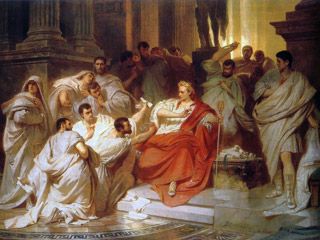Course Description
This course explores the political, social, and economic factors commonly offered to explain the fall of the Roman Republic: growth of the territorial empire, increased intensity of aristocratic competition, transformation of the Italian economy, growth of the city of Rome and dependence of the urban plebs, changes in …
This course explores the political, social, and economic factors commonly offered to explain the fall of the Roman Republic: growth of the territorial empire, increased intensity of aristocratic competition, transformation of the Italian economy, growth of the city of Rome and dependence of the urban plebs, changes in military recruitment and dependence of soldiers on their generals. There is an emphasis on the reading of ancient sources in translation, including Cicero, Sallust, Caesar, Augustus, Appian, Plutarch, and Suetonius.
Course Info
Instructor
Departments
Learning Resource Types
notes
Lecture Notes
assignment
Written Assignments

Die Ermordung Cäsars (The Murder of Caesar), an 1865 painting by Karl Von Piloty. (This image is in the public domain. Source: Wikimedia Commons.)








